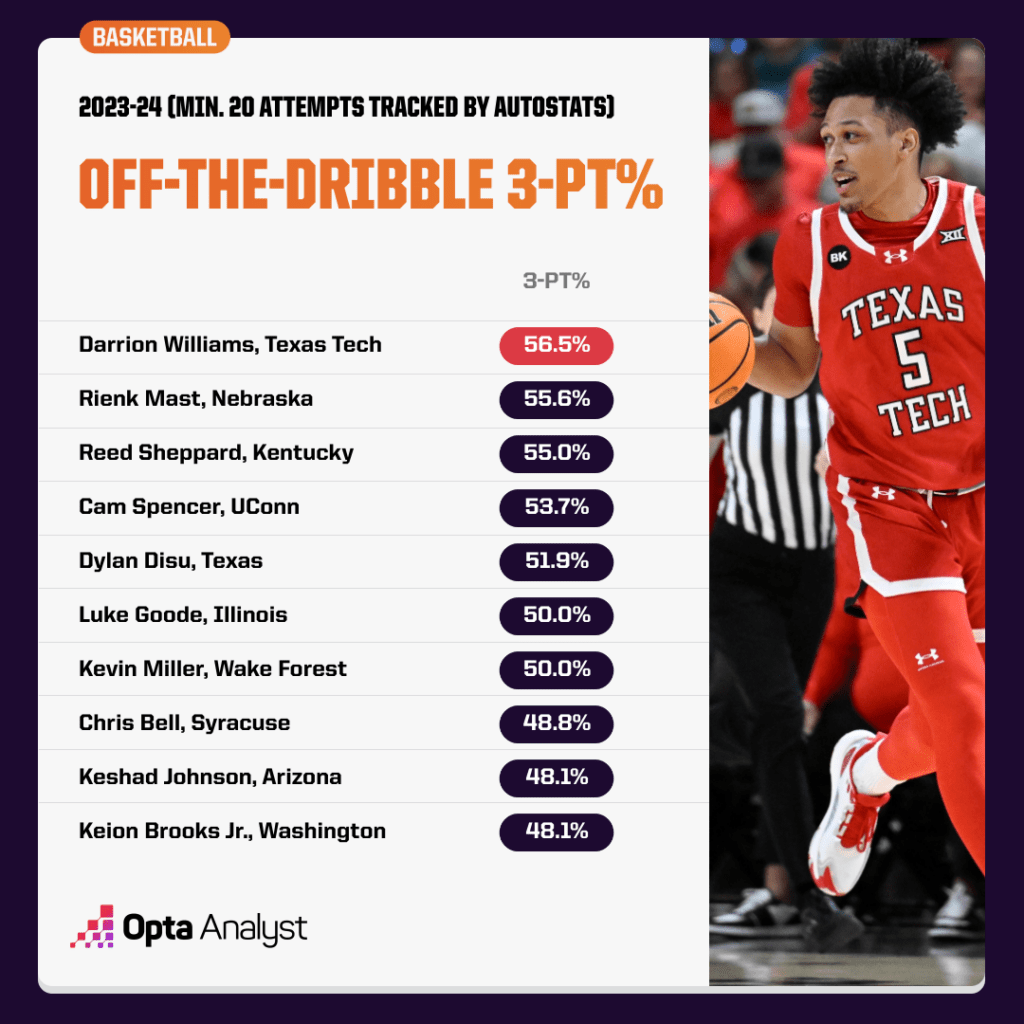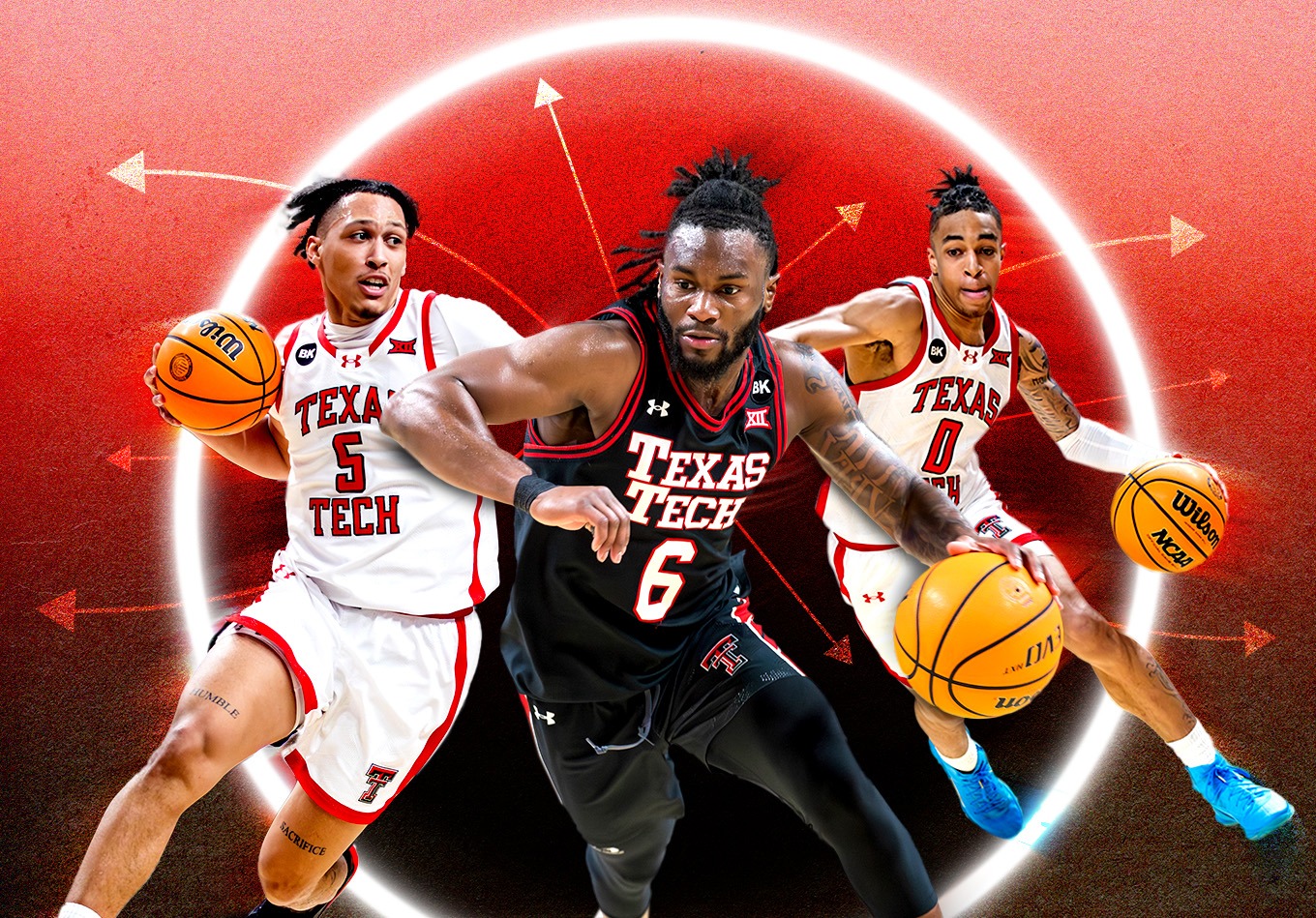With the help of AutoStats tracking data, we’re breaking down how the Red Raiders have bounced back this season with four transfers in the team’s top five in minutes per game.
Some say it’s college basketball free agency. Some say it empowers players to take control of their careers. Others insist it’s destroying the sanctity of what has made NCAA hoops so great for so long.
Like it or not, the transfer portal appears to be here to stay, giving players greater freedom of movement as they search for the opportunity that will boost the prospects of their playing careers.
According to reports, over 1,800 players entered the men’s basketball transfer portal last year. Some head coaches have embraced that, building or supplementing their rosters through the portal. But some have had their teams destroyed by it, and others have even made the choice to walk away.
For one team in the Big 12, using the transfer portal as a major resource has keyed an outstanding season under first-year coach Grant McCasland after a 16-16 finish last year.
With four transfers in the team’s top five in minutes per game, Texas Tech has won 23 games and was third (11-7) in the toughest conference in the nation (per TRACR). The Red Raiders, 18th in our TRACR rankings, have earned a 6 seed in the NCAA Tournament and will face 11-seed and ACC Tournament-champion NC State (22-14) in the South Region. Our supercomputer has given them a 63.9% probability of moving on to the second round.
Each of those four transfers – Joe Toussaint (West Virginia), Darrion Williams (Nevada), Chance McMillian (Grand Canyon) and Warren Washington (Arizona State) – gained valuable March Madness experience last season.
“That was a focus of ours,” McCasland, who guided North Texas to a 31-win season in 2022-23, told The Associated Press.
McCasland hopes to have his starting center back in the lineup after Washington has missed the last six games due to a foot injury. This is the 7-footer’s fourth stop after previously playing at Oregon State, Nevada and Arizona State.
“I could have never imagined going to this many schools, but I really believe everything happens for a reason and appreciate the opportunity,” Washington said. “I think it’s helped me be prepared for any situation.”
Washington, who is considered day-to-day, leads the team in blocks (1.5 per game) and ranks second in rebounding (7.4). He’s done that despite 45.7% of his rebounds being contested, according to AutoStats tracking data. That ranks in the 95th percentile and is up from last season when 32.6% of his 6.9 rebounds per game were contested.
The team’s other big man on the boards, Williams, is expected to play in the NCAA tourney opener despite suffering an ankle injury against BYU in the quarterfinals of the Big 12 Tournament. He did not play in the semifinal loss to Houston.
Williams is averaging 11.4 points and a team-high 7.5 rebounds, and is shooting 46.7% from 3-point range after only making 36.4% last season at Nevada. That’s partially because he’s shooting a higher percentage of his 3s off the dribble – where he seems to be much more comfortable.
In fact, 42.6% of his 3s tracked by AutoStats have been off the dribble, compared to only 11.1% last season. And he’s shooting 56.5% on those attempts, which is tops among all players with at least 20 attempts.

Look for Texas Tech to try to open space for Williams with ball screens. The Red Raiders average 1.04 points per chance in situations in which Williams has a ball screen (ranking in the 95th percentile). Individually, Williams scores 0.339 points per screen, which ranks in the 96th percentile.
Toussaint, another well-traveled Raider who played three seasons at Iowa and another at West Virginia in 2022-23, is putting up a career-high 12.1 points per game, a team-leading and career-best 4.3 assists, and a team-high 1.4 steals.
Toussaint ranks second on the team in scoring, which is impressive considering 71.9% of his jumpers have been contested (84th percentile) and the average defender influence score – a measure of defender intensity – on his shots is 78.5 (94th percentile).
Both values are higher than the rates during his lone season at West Virginia, where 61.5% of his jumpers were contested and the average defender influence score was 76.2.
Toussaint’s dynamic playmaking ability is evident as he ranks in the 80th percentile with 17.6% of his passes resulting in assist opportunities. He hasn’t had much trouble finding McMillian, who has only been contested on 43.0% of his jumpers (in the bottom 16% of all players).
McMillian’s expected eFG% has been 54.1% – ranking in the upper 7% nationally – and the average defender influence score has been 72.3 – ranking in the bottom 19%. He’s been a force defensively as well, as opponents have only shot 25.0% from 3 against him, which ranks in the top 6% of all defenders.
It’s an influx of talent through the transfer portal that’s added up to quite a turnaround in Lubbock.
Enjoy this? Check out our MLB, NBA and NFL coverage, and follow along on X and Instagram for more.
